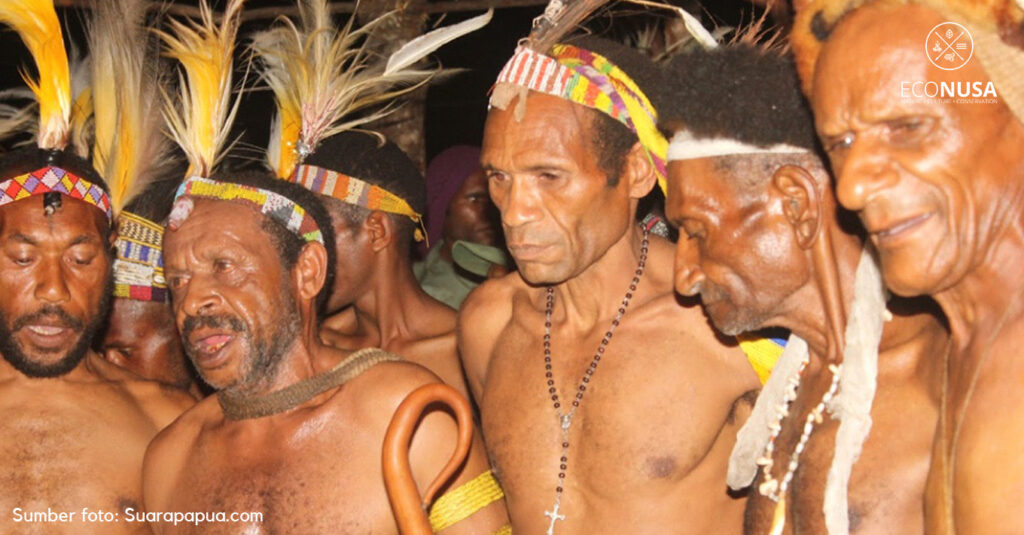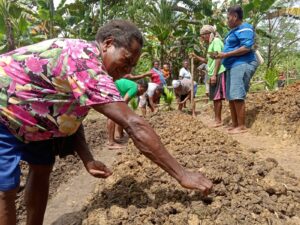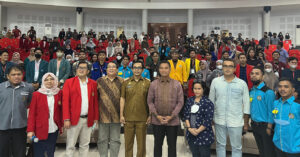
Ngalum Ok tribe is one of seven tribes inhabiting the valley, precisely in the Oksibil valley, in the southern part of the Jayawijaya Mountains range of Bintang Mountains areas in Papua. The word Oksibil in Ngalum Weng (Ngalum language) consists of two words: Ok which means water, and Sibil which means near. Ngalum itself means east, which implies Ngalum people are people who live in the east.
Most of the Ngalum Ok people are found living close to water, such as rivers and springs. Therefore, they are also known as “water people” because their life is always looking for water.
For Ngalum Ok people, water is the source of life that contains philosophical, theological, ecological, and economic meanings. The Ngalum Ok people see that water (ok) creates and brings true life, gives fertility and prosperity to humans, reflects calmness, peace, tranquility, purity, maturity, and safety, and teaches other values of life. Therefore, the Ngalum Ok Tribe applies a philosophy of life like water. They do not like to make noise, and are always at peace with their surroundings, including with nature.
Read also: Forest as a Source of Medicine for Dani Tribe
In the belief of the Ngalum Ok people, the world and all the creatures in it were created and protected and guarded by Atangki (the Creator). If nature is not properly taken care of , they believe that Atangki will be angry and create natural disasters that harm them.
They also believe that the first humans who were also their ancestors, Kaka I Onkora and Kaka I Ase, were created by Atangki in Aplim-Apom, widely known as Puncak Mandala, the highest peak of the Jayawijaya mountain range. Aplim-Apom is a very sacred place for the Ngalum Ok people.
In the Ngalum language, Aplim-Apom comes from a combination of several words, including Ap meaning house, Lim meaning blood or fire, and Om meaning taro. Aplim symbolizes the male and Apom symbolizes the female.
Read also: Menke Womom, Imminence Proof of Abun Tribe and Oceans God
Most of Ngalum Ok people survive by farming. Some of the food crops grown include batatas (sweet potato), cassava, wax vegetable (Saccharum edule), yamen, gedi, and om (taro). Several other types of food crops introduced by the missionaries were also planted such as red beans, soybeans, carrots, cabbage, and tomatoes.
Slightly different from other food crops, om (taro) has a “precious value” in the lives of the Ngalum people. For them, taro plays an important role as a means of connecting them with Atangki, the Creator.
Apart from farming, the Ngalum Ok people also raise kang (pigs). For Ngalum people, these animals have an important role, not only to fulfill food needs but also to symbolize social and economic status.
Read also: Sasi Sambite: Local Wisdom to Boost Nutmeg Quality in Arguni Bawah
The lives of the Ngalum Ok people and nature have long evidently shown a very strong relationship. Nature is not only meant as a place to live but also as an entity created by Atangki that provides lessons about the philosophy of life, so its existence must be preserved. Protecting nature means protecting human life from disaster and destruction.
Editor: Leo Wahyudi




